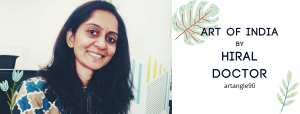Pattachitra is the art of traditional, cloth-based scroll painting that is one of the oldest (believed to have originated as early as 5th century) and most popular art forms practiced majorly in Odisha. The name comes from the Sanskrit words “patta” meaning cloth and “chitra” meaning picture.
The Pattachitra artists also known as the chitrakars, predominantly made icon paintings based on the depiction of mythological figures or episodes.
Pattachitra is mainly characterised by the following themes:
– Thia Badhia – depiction of the Jagannath temple
– Krishna Lila – enactment of Jagannath as Lord Krishna displayed his powers as a child; – Dasabatara Patti – the ten incarnations of Lord Vishnu and
– Panchamukhi – depiction of Lord Ganesh as a five-headed deity.
The most detailed and skilled Pattachitra work is found in and around Puri, especially in the village of Raghurajpur. This old tradition of Oriya painting still survives in the places like Puri, Raghurajpur, Paralakhemundi, Chikiti and Sonepur. Even today in Odisha, these two crafts are combined in one. The artists are usually Mohapatras or Maharanas.
The lines in Pattachitra painting are bold, clean, angular and sharp. The background on which the figures are represented is delineated with decorations of flowers and foliage. All the paintings are given decorative borders. The whole painting is conceived in the form of a design on a given canvas.
The Process
Preparing the patta is the first step to the Pattachitra art. A task that takes around five days, the patta is prepared by making a tamarind paste, also known as niryas kalpa. This paste is then used to hold two pieces of cloth together and coated with a powder of soft claystone until it becomes firm. As soon as the cloth dries, it is polished with a rough stone and then with a smooth stone or wood. The canvas is considered ready to paint once it becomes leathery. The next stage involves preparing the paints to be used for this art. The gum of kaitha tree, powdered conch shells, lamp soot, etc. are used to make the colours. Pattachitra painters, traditionally known as chitrakars, primarily use bright colours like red, yellow, indigo, black and white. From being painted on palm leaves to silks, the Pattachitra art has come full circle.



